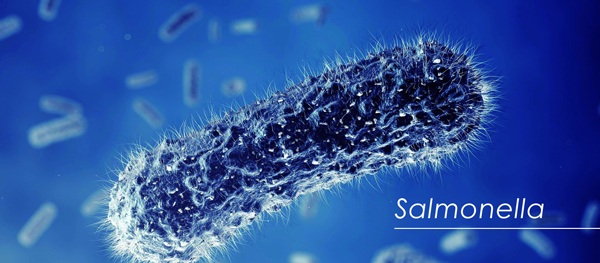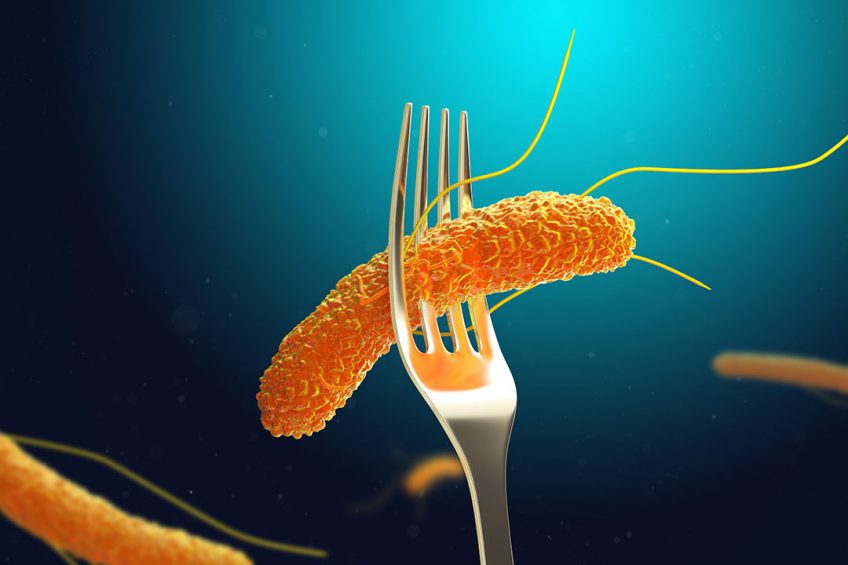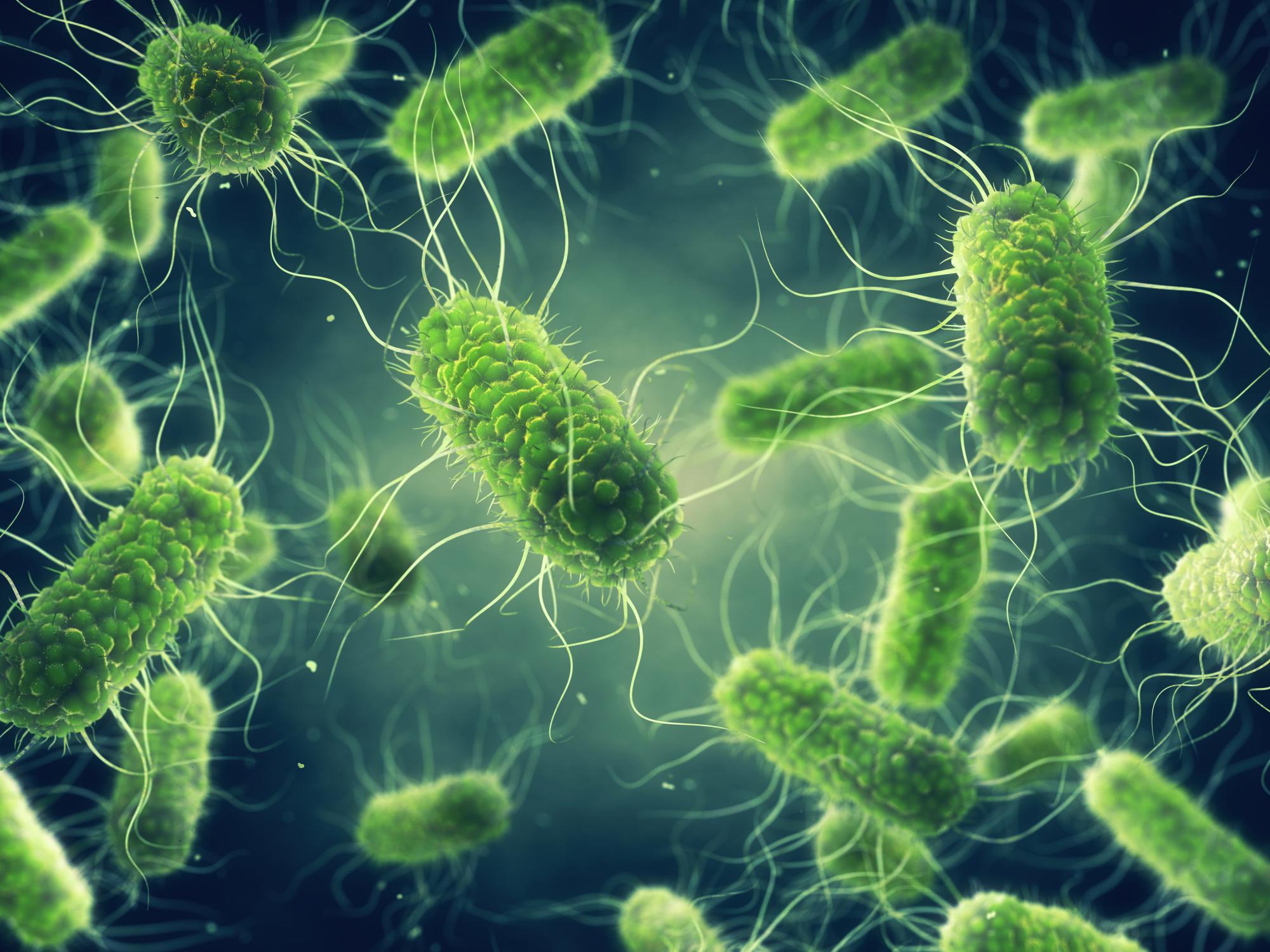Salmonella
Symptoms usually begin 6 hours to 6 days after infection and last 4 to 7 days. Salmonella infection most often causes gastroenteritis which can range from mild to severe.
2004Gastroenteritis is the most common manifestation of Salmonella infection worldwide.

. The minimum infectious dose is less than salmonella enteritis. Most people who get ill from Salmonella have diarrhea fever and stomach cramps. Eating undercooked foods contaminated with animal feces.
Salmonella is the type of bacteria thats the most frequently reported cause of food-related illness in the United States. Although belonging to the same species. Illness from these bacteria is.
Typhi can cause typhoid fever. You cant see smell or taste it. Salmonellosis is a symptomatic infection caused by bacteria of the Salmonella type.
This is a serious disease which can be life-threatening if not treated quickly with antibiotic medicines. Some are present in animals but can also affect. Salmonella are bacteria that make people sick.
Salmonella Typhi pass through fecal contaminated food or drinking water in the gastrointestinal tract. Read more on Queensland Health website. Salmonella escape from the basal side of epithelial cells into the lamina propria.
After passing through the intestinal wall is the lymphatic and hematogenous spread with secondary settlement in the. In humans the most common symptoms are diarrhea fever abdominal cramps and vomiting. Typhi and parathyroid fever A B and C are septicaemic disease.
Eating raw or undercooked beef poultry like chicken or duck and. Salmonella penetrate the intestinal epithelial cells but unlike Shigella and invasive E. Salmonella can pass out of the intestines into poop fecesstool.
Cooking food destroys Salmonella. Salmonella infection salmonellosis is a type of gastroenteritis caused by Salmonella bacteria. Some other types of Salmonella cause typhoid fever or paratyphoid.
What illness do people get from Salmonella infection. Salmonella infection remains a major public health concern worldwide contributing to the economic burden of both industrialized and underdeveloped countries through the costs associated with surveillance prevention and treatment of disease Crump et al. Humans become infected most frequently through contaminated water or food.
Salmonella infection salmonellosis is a common bacterial disease that affects the intestinal tract. Salmonella bacteria are facultative anaerobes that are capable of fermenting glucose mannitol and sorbotol. One type of salmonella Salmonella typhi S.
It is also a food-borne disease and are defined as diseases usually either infectious or toxic in nature caused by agents that enter the body through the ingestion of food. Can grow aerobically or anaerobically - This means that they can also grow in the presence of oxygen. Spector and Kenyon 2012.
Salmonellas are a group of common bacteria that cause food poisoning. Coli do not escape the phagosome. Salmonella is a type of bacteria that can cause diarrheal illness in humans.
A person can get infected with Salmonella by. There are over 2500 subtypes including animal and human strains. It causes diarrhoea at first and then high temperature fever headache stomach cramps skin rash feeling sick nausea and loss of appetite.
Salmonella bacteria typically live in animal and human intestines and are shed through faeces. Typhoid fever caused by Salmonella typhi is widely recognized as a major public health problem in developing countries. The test can show a positive response within 23 days of infection.
Symptoms of salmonella also called salmonellosis typically resolve themselves within a few days and include diarrhoea stomach cramps nausea vomiting and fever. Salmonella enterica is a food-borne intracellular pathogen that can invade intestinal epithelial cells and survive in macrophages of susceptible hosts. However symptoms can be more severe and lead to hospitalisation especially in the very young and those with weakened immune systems.
When there is a lack of nutrients such as carbon sources this can trigger global stress responses in Salmonella resulting in a changed physiological state with a wide array of. It separately identifies IgM and IgG antibodies. CDC estimates Salmonella bacteria cause about 135 million infections 26500 hospitalizations and 420 deaths in the United States every year.
Salmonella are a type of bacteria that can live in the digestive tract intestines of humans and other animals. Symptoms in people start within 6 hours to 6 days after ingesting the bacteria and include. Salmonella infection salmonellosis is a common bacterial disease that affects the intestinal tract.
Another type of salmonella Salmonella paratyphi S. In Australia most Salmonella infections occur after eating contaminated food but also sometimes after contact with another person with the infection. Typically people with salmonella infection have no symptoms.
Systemic spread of the organisms can occur giving rise to enteric fever. As such a majority of Salmonella bacteria have the following characteristics. Salmonella is named after D.
Salmonella can be spread by food handlers who do not wash their hands andor the surfaces. Salmonella growth survival and virulence respond to a series of stress factors such as pH oxygen availability and osmolarity Altier 2005. They were first discovered by an American scientist named Dr.
Salmonella can be spread from person to person so anyone. Typhidot is a blood test consisting of an ELISA kit which detects IgM and IgG antibodies against the bacteria Salmonella typhi. Salmon an American bacteriologist who first isolated the bacteria from a pig intestine in 18841 The Salmonella bacteria is a Gram-negative motile hydrogen sulfide producing an acid-labile facultative intracellular microorganism that commonly causes gastroenteritis worldwide and causes cross-infection between humans and.
Humans become infected most frequently through contaminated water or food. While they are capable of using oxygen for respiration they can also survive through anaerobic. Thus the extent of intercellular spread and ulceration of the epithelium is minimal.
Salmonella bacteria typically live in animal and human intestines and are shed through feces. Most types of Salmonella cause an illness called salmonellosis which is the focus of this website. Is excreted in the urine or faeces.
Salmonella are a group of bacteria that can cause gastrointestinal illness and fever called salmonellosis. Food is the source for most of these illnesses.

Infections A Salmonella Non Typhiques Maladies Infectieuses Edition Professionnelle Du Manuel Msd

This Month Let S Talk About Salmonella Certest Biotec Ivd Diagnostic Products

On Topic Dit Betekent Salmonella Voor De Voedselveiligheid

Salmonella The Most Common Cause Of Foodborne Outbreaks In The European Union Efsa

Reducing Salmonella And Its Impact On The Poultry Industry Pig Progress

3 Key Findings To Heighten Salmonella Control In Us Poultry Feed Production

Efsa And Ecdc Investigate Multi Country Salmonella Outbreak Linked To Chocolate Products Efsa

:max_bytes(150000):strip_icc()/salmonella-treatment-4164292-FINAL-20f18c88ed5f43b2a8faefe47e21f71b.png)
